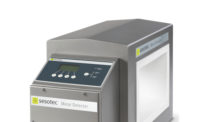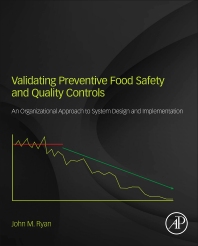Freeze Contaminants in their Tracks with Proper Food Quality Control

According to the American Frozen Food Institute, 90% of U.S. consumers are eating more meals at home compared to pre-pandemic times, with frozen foods a popular choice. Getty Images.
The significance of quality control (QC) in frozen food manufacturing and processing cannot be overlooked. Contaminants pose considerable health risks for consumers, while even slight variations in product weights can result in economic ramifications for manufacturers. Implementing stringent controls along the entire production line is therefore crucial, as it can help to identify potential hazards that may damage equipment, tarnish a brand's image, and lead to expensive downtime, as well as guarantee that packages contain the correct quantity of product.
Rising consumer demand puts pressure on frozen food processing facilities to boost output and keep freezers stocked. These sites often already employ a round-the-clock workforce, compelling companies to search for alternative methods, like the increased use of automation. Employing automated systems has revolutionized many sectors – from aerospace to healthcare – and it certainly is not a novel concept in the food and beverage industry, with many companies already relying on robots and automated manufacturing workflows. However, as production increases, so does the chance of contaminants creeping into production lines. More and more frozen food processing facilities are therefore also turning to automation to bolster their QC activities, helping them to meet the ever-rising demands in a competitive global market.
Manufacturers need to assess their entire operation to ensure that frozen foods stay contaminant free, often requiring the implementation of various detection technologies tailored to different stages of production. There is no universal method for food inspection; the most appropriate approach depends on the needs of each operation. Hazard analysis can help to identify the different types of foreign objects that are most likely to be introduced, which depends on the kind of food and its origin. The choice of technology to use – as well as where it should be positioned in the production line – largely boils down to the type of potential contaminant, the packaging material, and the product composition.
X-ray, Metal Detector, or Both?
Metal detectors, known for being cost-effective and long operational life, can be incorporated at almost any point along the production line, identifying metal contaminants such as ferrous or non-ferrous metal fragments or wires. In contrast, X-ray systems are effective in detecting both metallic and non-metallic contaminants – including glass, ceramic, and stone – and are often employed at critical production stages, such as the end of the production line after packaging.
Generally, X-ray systems are more efficient at detecting high-density contaminants, while the efficacy of metal detectors depends on their operating frequencies; higher frequencies prove more effective in identifying stainless steel foreign objects, while lower frequencies are better at detecting ferrous contaminants. Manufacturers and processors must also consider signals caused by the intrinsic conductivity or magnetic properties of frozen foodstuffs themselves. This “product effect” can often be strong enough for a metal detector to identify the actual food as a contaminant – especially in products with a high moisture or salt content – meaning X-ray systems may be more suitable in this instance.
Food packaging has also evolved to meet various consumer and production demands, creating greater demand for novel inspection solutions to ensure the safety and integrity of packaged products. The choice of packaging can be the deciding factor when choosing a detection method, as many food processing facilities have adopted metalized films or foil-based packaging to improve shelf life, boost visual appeal, and reduce overall costs. However, this type of packaging creates too much signal for metal detectors, reducing contaminant detection sensitivity and increasing the number of false rejects. Therefore, X-ray inspection systems are recommended in this case.
Quality and Consistency
Quality control can be boosted with the use of metal detectors and X-ray systems, helping to safeguard consumer health while offering peace of mind to manufacturers. However, stringent food QC exceeds this, and facilities must also deliver consistent products to the market, especially with regard to individual package weights. Manufacturers lose profits if products are overweight, but face penalties if they are underweight. Incorporating weight verification instruments into the production line is therefore an important part of the QC workflow. Often, inline checkweighers are installed for this purpose, as they have little impact on overall manufacturing speed. Modern instruments can scan from 250 to 700 or more packages per minute – without sacrificing accuracy – saving time and labor costs to ensure regulatory compliance and boost profits.
Looking for a reprint of this article?
From high-res PDFs to custom plaques, order your copy today!










